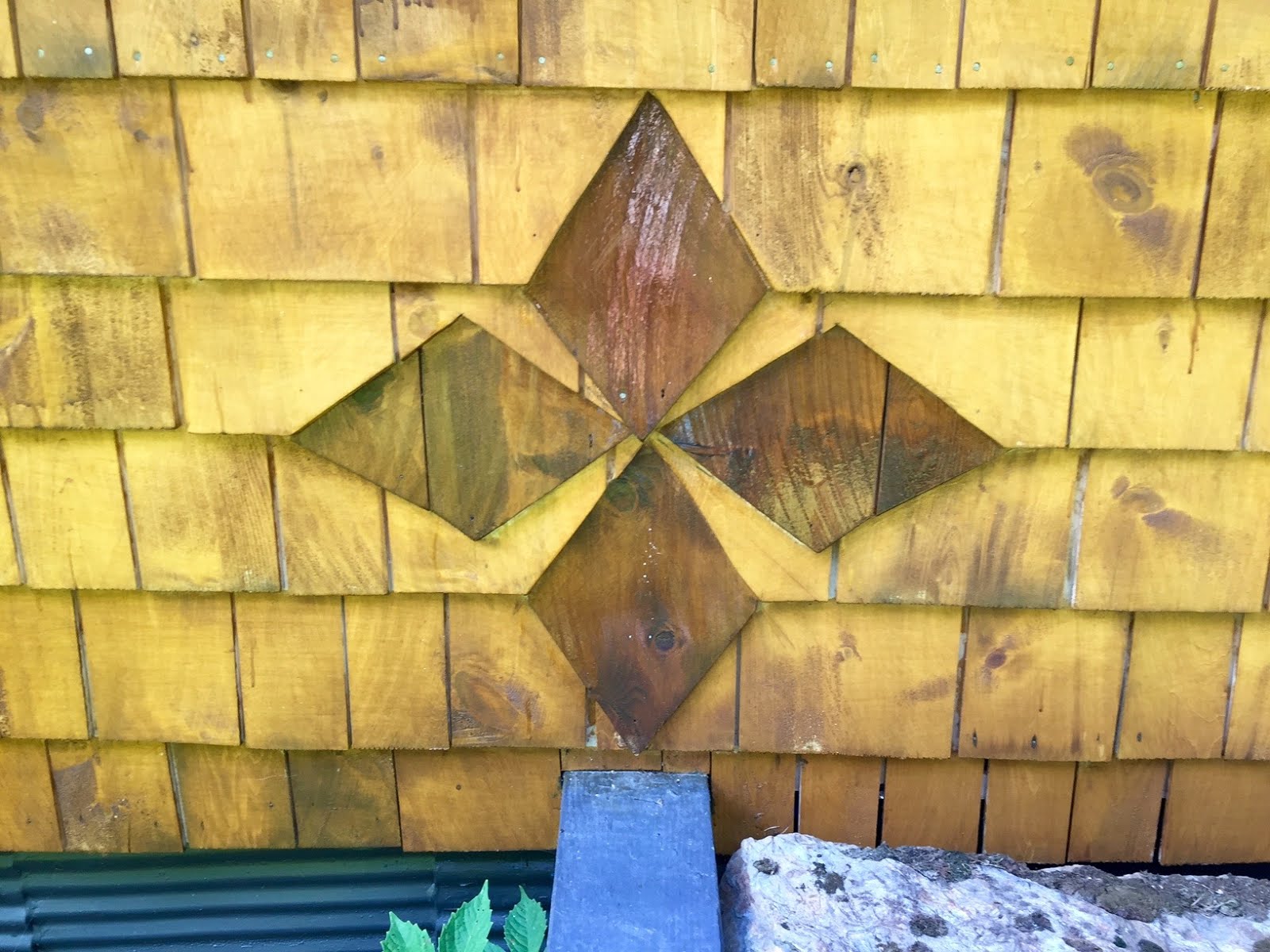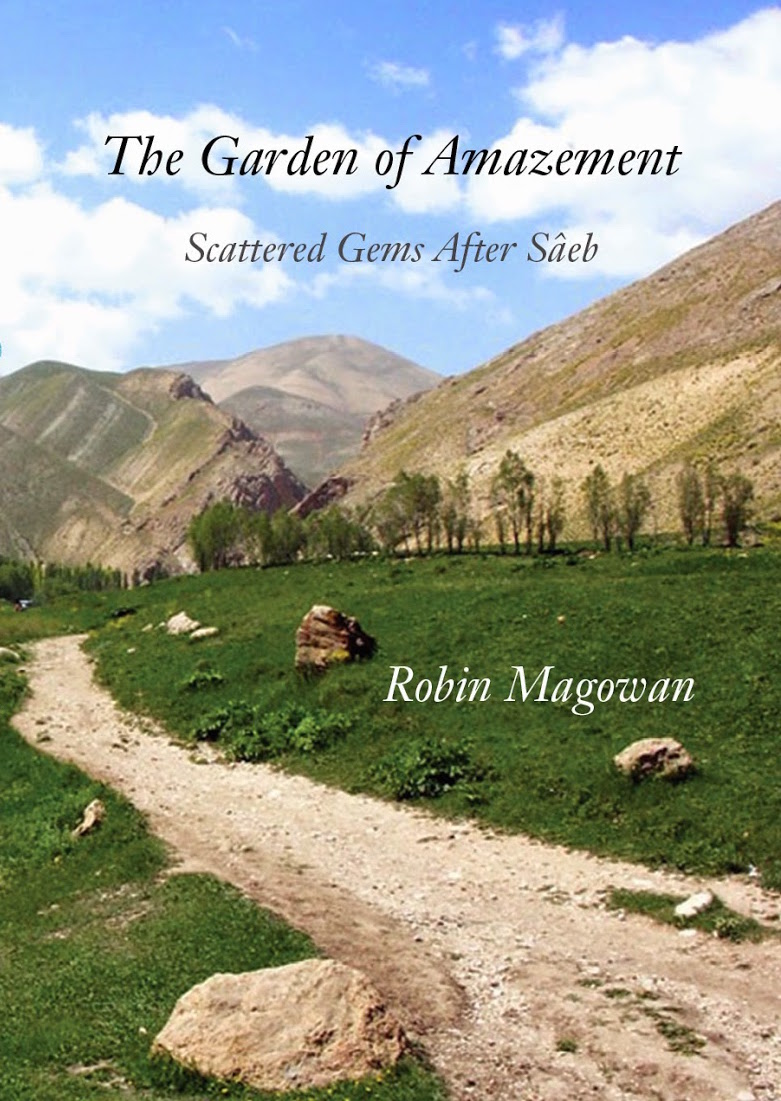
Pro Publica
Years of Internal BP Probes Warned That Neglect Could Lead to Accidents by Abrahm Lustgarten and Ryan Knutson
A series of internal investigations over the past decade warned senior BP managers that the company repeatedly disregarded safety and environmental rules and risked a serious accident if it did not change its ways.
The confidential inquiries, which have not previously been made public, focused on a rash of problems at BP's Alaska oil-drilling unit that undermined the company's publicly proclaimed commitment to safe operations. They described instances in which management flouted safety by neglecting aging equipment, pressured or harassed employees not to report problems, and cut short or delayed inspections in order to reduce production costs. Executives were not held accountable for the failures, and some were promoted despite them.
Similar themes about BP operations elsewhere were sounded in interviews with former employees, in lawsuits and little-noticed state inquiries, and in e-mails obtained by ProPublica. Taken together, these documents portray a company that systemically ignored its own safety policies across its North American operations - from Alaska to the Gulf of Mexico to California and Texas.
Tony Hayward, BP's CEO, has committed himself to reform since taking the top job in 2007. Top BP officials would not comment for this story, but spokesman Tony Odone said that in March an independent expert reported that BP has made "significant progress" toward meeting goals set in 2007 in response to a deadly Texas refinery explosion. Odone said the notion that BP has ongoing problems addressing worker concerns is "essentially groundless."
Because of its string of accidents before the recent blowout in the Gulf, BP already faced a possible ban on its federal contracting and on new U.S. drilling leases [3] [3], several senior former Environmental Protection Agency debarment officials told ProPublica. That inquiry has taken on new significance in light of the Gulf accident. One key question the EPA will consider is whether the company's leadership can be trusted and whether BP's culture can change.
The reports detailing BP's Alaska investigations -- conducted by outside lawyers and an internal BP committee in 2001, 2004 and 2007 -- were provided to ProPublica by a person close to BP who believes the company has not yet done enough to eradicate its shortcomings.
A 2001 report [4] [4] noted that BP had neglected key equipment needed for emergency shutdown, including safety shutoff valves and gas and fire detectors similar to those that could have helped prevent the fire and explosion on the Deepwater Horizon rig in the Gulf.
A 2004 inquiry found a pattern of intimidating workers who raised safety or environmental concerns. It said managers were shaving maintenance costs with the practice of "run to failure," under which aging equipment was used as long as possible. Accidents resulted, including the 200,000-gallon Prudhoe Bay pipeline spill in 2006, the largest ever spill on Alaska's North Slope.
During the same period, similar problems surfaced at BP facilities in California and Texas.
In 2002, California officials discovered that BP had falsified inspections of fuel tanks at a Los Angeles-area refinery and that more than 80 percent of the facilities didn't meet requirements to maintain storage tanks without leaks or damage. Inspectors were forced to get a warrant before BP allowed them to check the tanks. The company eventually settled a civil lawsuit brought by the South Coast Air Quality Management District for more than $100 million.
In 2005, an emergency warning system failed before a Texas City refinery exploded in a ball of fire. BP's investigation of that deadly accident [5] [5] -- conducted by a committee of independent experts -- found that "significant process safety issues exist at all five U.S. refineries, not just Texas City." It said "instances of a lack of operating discipline, toleration of serious deviations from safe operating practices, and apparent complacency toward serious process safety risk existed at each refinery." BP spokesman Odone said that after the accident the company adopted a six-point plan to update its safety systems worldwide. But last year the Occupational Safety and Health Administration fined BP $87 million for failing to make safety upgrades at that same Texas plant.
It is difficult to compare safety records among companies in industries like oil exploration. Some companies drill in harsher environments. And bad luck can play a role. But independent experts say the pervasiveness of BP's problems, in multiple locales and different types of facilities, is striking.
"They are a recurring environmental criminal and they do not follow U.S. health safety and environmental policy," said Jeanne Pascal, a former EPA debarment attorney who led the investigations into BP. "At what point are we going to say we are not going to do business with you any more, bye? None of the other supermajors have an environmental criminal record like they do."
***
Since the late 1960s, BP has pulled oil from underneath Alaska, usually without problems. But when the company pleaded guilty to a felony conviction in 1999 for illegal dumping at an offshore drilling field there it drew fresh scrutiny to its operations and set off a cascading cycle of attempted -- and seemingly failed -- reforms that continued over the next decade.
To avoid having its Alaska division debarred -- the official term for a cancellation of contracts with the federal government -- BP agreed to a five-year probationary plan with the EPA. The company would reorganize its environmental management, establish protections for employees who speak out about safety issues, and reform its approach to risk and regulatory compliance. The company pledged to improve its conduct and reform its safety and maintenance programs.
Less than a year later, employees complained to an independent arbitrator that BP was letting equipment and critical safety systems languish at its Greater Prudhoe Bay drilling field. BP, in the spirit of reform, hired a panel of independent experts to examine the allegations.
The panel identified systemic problems in maintenance and inspection programs -- the operations that keep the drilling in Prudhoe Bay running safely -- and warned BP that it faced a "fundamental culture of mistrust" by its workers, in part because senior management lacked a structure of accountability.
"There is a disconnect between GPB (Great Prudhoe Bay) management's stated commitment to safety and the perception of that commitment," the experts said in their 2001 operational integrity report [4] [4]. "Correcting these underlying causes is essential ... for ensuring long term operational efficiency and mechanical integrity. Without a concerted effort to address these basic issues, any other action will provide only temporary relief."
According to the report, "unacceptable" maintenance backlogs ballooned as BP tried to sustain profits in the aging North Slope even though production was declining. The consultants concluded that BP had neglected to clean and check pressure valves, emergency shutoff valves, automatic emergency shutdown mechanisms and gas and fire safety detection devices essential to preventing a major explosion. It warned management of the need to update those systems, which "have a potential immediate safety impact or that pose an environmental threat."
It also warned that emergency shutdown systems would need to be operated manually, that there may not be enough staff to do so, and said that even if closed, the isolation valves were known to leak.
"Workers believe internal leak-through of isolation valves is a significant problem and under certain circumstances may pose a potential hazard to workers and equipment," the report stated.
In May 2002 -- less than seven months later -- Alaska state regulators underscored the panel's critical findings in a tersely worded order warning BP that it had failed to maintain its pipelines. Alaska struggled for two years to make BP comply with state laws and clear the pipeline of sedimentation that could interfere with leak detection systems.
Soon after, BP hired another team of outside investigators to check complaints made by workers on the North Slope. The resulting 2004 study by the law firm Vinson & Elkins warned that pipeline corrosion endangered operations on the Slope.
"Due to corrosive conditions present at the Greater Prudhoe Bay oilfield and the age of the field, corrosion control is and has been a major issue for BPXA," the study said.
It also offered a harsh assessment of BP's management of health, safety and environment concerns raised by employees. According to the report, workers accused BP of allowing "pencil whipping," or falsifying inspection data. The report quoted an employee who said BP workers felt pressure to skip key diagnostics, including pressure testing, cleaning of pipelines and checking for corrosion, in order to cut costs.
"To reduce staff workload it was suggested by BPXA management not to rebuild the pulling equipment as often ... and possibly not pressure test the equipment," BP employee Marc Kovac wrote in a safety complaint filed with the company. "This obviously would increase the potential for equipment failure resulting in equipment damage, environmental spills and injury to workers."
The report said that the manager in charge of corrosion safety in Alaska at the time, Richard Woollam, had "an aggressive management style" and subverted inspectors' tendency to report problems on the pipeline.
"Pressure on contractor management to hit performance metrics (e.g. fewer OSHA recordables) creates an environment where fear of retaliation and intimidation did occur."
Woollam was soon transferred, but the damage was done.
Two years later, in March 2006, disaster struck. More than 200,000 gallons of oil spilled out of a corroded hole in the Prudhoe Bay pipeline into the snow, the largest spill ever on the North Slope. Inspectors found that the steel pipe -- the inside of which hadn't been inspected in years -- had been corroded to dangerously thin levels along nearly 12 miles of pipeline. It was exactly the kind of situation BP's auditors and Alaska officials had feared.
When Congress held hearings into the cause of the spill later that year, Woollam pleaded the Fifth Amendment. He now works in BP's Houston headquarters. Reached at his home in Texas this week, Woollam referred questions to the BP press office, which declined to comment on the matter.

In August 2006, just five months after the spill at Prudhoe Bay, a pipeline safety technician for a BP contractor in Alaska discovered a two-inch snaggle-toothed crack in the steel skin of an oil transit line. Nearby, contractors were grinding down metal welds, sending a fan of sparks shooting across the work site. The technician, Stuart Sneed, feared the sparks could ignite stray gases, or the work could make the crack worse, so he ordered the contractors to stop working.
"Any inspector knows a crack in a service pipe is to be considered dangerous and treated with serious attention," Sneed told ProPublica. "The crack could have created a hellacious leaker with people grinding on it."
Sneed believed that the Prudhoe Bay disaster had made BP management more amenable to listening to workers concerns about potential safety problems. The company had replaced its chief executive for North America with Robert Malone and had ordered him to make fundamental changes. Malone quickly focused on reforming the company's culture in Alaska.
But instead of receiving compliments for his prudence, Sneed -- who had also complained that week that pipeline inspectors were faking their reports -- was scolded by his supervisor for stopping the work. According to a report from BP's internal employer arbitrators, Sneed's supervisor, who hadn't inspected the crack himself, said he believed it was superficial.
The next day, according to multiple witness accounts and the report, that supervisor singled out Sneed and harassed him at a morning staff briefing. Within a couple of hours, the supervisor sent emails to colleagues soliciting complaints or safety concerns that would justify Sneed's firing. Two weeks later, after a trumped up safety infraction, he was gone.
During the investigation BP inspectors substantiated Sneed's concerns about the cracked pipe. The arbiter also investigated Sneed's account of what happened when he reported the problem. Not only did the report confirm his account, but it determined that he was among the best at his job.
The investigators interviewed dozens of workers and according to most of them Sneed "was likely to be the most careful technician on the Slope with respect to safety and quality of his inspections. If there was corrosion in existence... he would find it," said the report, which was authored by Washington, D.C., attorney Billie Garde and environmental investigator Paul Flaherty and delivered to BP executives in late 2006.
So why would BP want to get rid of one of its most effective inspectors? The report echoed BP's internal investigations from 2001 and 2004, finding, once again, that BP pressured its contractors and employees in order to save money.
"Many of the people interviewed indicate that they felt pressured for production ahead of safety and quality," the report stated.
Contractors received incentives to list large numbers of completed inspections, the report found, something Sneed said routinely led workers to falsify their reports. Contractors also received a 25 percent bonus tied to BP's production numbers. With fewer delays, more oil would be pumped, and more cash would flow to companies executing the work under BP supervision.
The message to workers was clear.
"They say it's your duty to come forward," said Sneed of BP's corporate policies and public statements, "but then when you do come forward, they screw you. They'll destroy your life."
"No one up there is ever going to say anything if there is something they see is unsafe," he added. "They are not going to say a word."
The following year saw another shakeup at BP. The company had already replaced its chief executive of Alaskan operations with Doug Suttles -- the man now in charge of offshore operations and cleanup of the disaster in the Gulf. In May 2007 it also named a new global CEO, Tony Hayward, a 25-year BP veteran.
But worker harassment claims continued to be made in Alaska and elsewhere, and more problems with the Alaska pipeline systems also emerged.
In September 2008, a section of a high pressure gas line on the Slope blew apart. A 28-foot-long section of steel -- the length of three pickup trucks -- flew nearly 1,000 feet through the air before landing on the Alaskan tundra. Sneed had raised concerns about the integrity of segments of the high-pressure gas line system before he left the company. If the release had caught a spark the explosion could have been catastrophic, said Robert Bea, a University of California Berkeley engineering professor who has worked for BP on the North Slope.
Three more accidents rocked the same system of pipelines and gas compressor stations in 2009, including a near explosion that could have destroyed the entire facility. According to a letter that members of Congress sent to BP executives [6] [6], obtained by ProPublica, the near miss was the result [7] [7] of malfunctioning safety and backup equipment.
BP spokesman Tony Odone said BP is continuing to roll out a company-wide operating management system that helps track and implement maintenance. He said the company reduced corrosion and erosion-related leaks in Alaska by 42 percent between 2006 and 2009.
***
As BP battled through the decade to avoid accidents in Alaska, another facility operating under a different business unit, BP West Coast Products, was having similar problems.
For years the BP subsidiary that refined and stored crude oil was allowed to inspect its own facilities for compliance with emission laws under the South Coast Air Quality Management District, the agency that regulates air quality in Los Angeles. The thinking was that companies had the technical knowledge and that self-inspection was cheaper and more efficient.
But in 2002, eight years after the program began, inspectors with the management district thought BP's inspection results looked too good to be true. Between 1999 and 2002, BP's Carson Refinery had nearly perfect compliance, reporting no tank problems and making virtually no repairs. The district began to suspect that BP was falsifying its inspection reports and fabricating its compliance with the law.
The management district sent its own inspectors to investigate, but when they tried to enter BP's plant, the company turned them away. According to Joseph Panasiti, a lawyer for the management district, the agency had to get a search warrant to conduct inspections required by state law.
When the regulators did finally get in, they found equipment in a disturbing state of disrepair. According to a lawsuit the management district later filed against the company, inspectors discovered that some tanker seals had tears that were nearly two feet long. Tank roofs had gaps and pervasive leaks, and there were enough major defects to lead to thousands of violations.
"They had been sending us reports that showed 99 percent compliance, and we found about 80 percent noncompliance," Panasiti told ProPublica. "It was clear that no matter what was said, production was put ahead of any kind of environmental compliance."
Panasiti sued BP for $319 million, alleging, among other things, that emissions from the refinery forced nearby schools to be evacuated on two separate occasions. After 24 months of litigation, BP settled out of court, agreeing to pay more than $100 million without admitting guilt. Colin Reid, the plant's operations manager during the prosecution, was later promoted to a vice president position at a BP office in the United Kingdom. Reid recently left BP; he did not respond to requests for comment.
Allegations that BP or its contractors falsified safety and inspection reports are a recurring theme. Similar allegations were attributed to workers in BP's 2001 and 2004 internal reports on Alaska, but the internal auditors stopped short of confirming that fraud had occurred. The 2004 Vinson & Elkins report, titled "Report for BPXA Concerning Allegations of Workplace Harassment From Raising HSE Issues and Corrosion Data Falsification," says investigators did not thoroughly examine those allegations and couldn't conclude whether fraud had occurred. But the report extensively quoted workers who described how it was done.
As recently as 2006 a North Slope worker told a BP investigator that he suspected tests had been faked after an inspection team produced 2,500 completed reports from a weekend's work in remote territory. In 2007 another North Slope safety engineer brought in to examine a pipeline system quickly identified a pattern of problems in an area that had received clear inspection reports for the previous five years.
***
In August 2008, Kenneth Abbott accepted a job with a BP contractor as a project control leader on the Atlantis, a monstrous deepwater drilling rig in the Gulf of Mexico that is significantly larger than the Deepwater Horizon rig that sank in April. The Atlantis is capable of producing more than eight million gallons of oil a day from the ocean floor.
Abbott supervised a staff of six charged with doing internal audits and making sure the rig machinery was built to specifications and had the documents and instructions necessary to operate safely. It was an important job on one of the world's most advanced drilling platforms.
Yet it quickly turned sour. In a debriefing with the person who last held the post, Abbott was told that BP did not have final design drawings ready to deliver to the crews that would operate the Atlantis in the Gulf, Abbott said in an interview with ProPublica [8] [8].
Final design drawings, called "as-built" drawings, are considered an essential safety component. They prove that a piece of equipment -- say a shutoff valve or an engine winch -- was built the way it was supposed to be. Those drawings are thus the final checks to make sure the equipment operates properly. They also serve as instruction manuals for emergencies. If there is a fire on deck or a blowout, for example, operators under extreme stress and danger can use the design drawings to find the hidden kill lever that can shut an engine down before it explodes.
Abbott told ProPublica that as-built documents had been issued for only 274 of more than 7,100 pieces of equipment, the equivalent of constructing a house without having an architect or engineer sign off on the blueprint.
In May, Abbott filed a lawsuit against the Minerals and Management Service in federal court in Texas aiming to force the regulatory agency to stop Atlantis operations until BP could prove the documents are in place. He is not seeking monetary damages or compensation.
In the court filings, he said that some of the most critical spill-protection infrastructure, including the wellhead documents, hadn't been approved. None of the sub-sea risers -- the pipelines and hoses that serve as a conduit for moving materials from the bottom of the ocean to the facility -- had been "issued for design." And the manifolds that combine multiple pipeline flows into a single line at the sea floor hadn't been reviewed for final use.
Abbott -- an engineer with 30 years of experience completing design documents for companies like Shell and General Electric -- said the completion of "as-built" documents is standard for the industry. Machinery is designed, approved for manufacturing, checked to make sure it was built properly, and then approved for final use. If BP didn't provide the documentation to its workers in the field, it would be a stark exception.
Yet to Abbott's surprise BP's engineers resisted completing the process.
"I just hit a lot of resistance form the lead engineers," Abbott told ProPublica. "They got really angry with me. They wanted to shortcut the system and not do the reviews, because they cut short the man hours."
Abbott estimates BP saved $2 million to $3 million by streamlining the process.
"There seemed to be a big emphasis to push the contractors to get things done and that was always at the forefront of the operation," Abbott said. "I felt there had to be balance. You had to have safety because peoples' life depended on it. My management didn't see it that way."
Abbot's complaint wasn't the first time the company had been warned about not maintaining as-built drawings. According to BP's internal 2001 operational integrity report conducted in Alaska, as-built documentation wasn't being maintained at the company's Prudhoe Bay operations either.
It was among the issues BP executives were encouraged to fix after the audit of their operations there nearly a decade ago.
BP declined to discuss Abbott's allegations, telling ProPublica it does not comment on pending legal matters. In a previous statement made to federal investigators, BP said the drawings were updated and in place before the Atlantis began operating. The Minerals and Management Service is reportedly investigating Abbott's claims and Congress has also launched an inquiry that is still in progress.
A BP ombudsman letter written by Billie Garde and obtained by ProPublica confirmed Abbott's allegation that the company had violated its own safety and management protocol by not completing as-built documentation. The ombudsman's office has not yet investigated Abbott's claims about the specific pieces of equipment that lacked documentation because Abbott didn't make that information available until he filed the lawsuit last month.
Shortly after he raised his complaints to BP management, Abbott lost his contract to work with BP.
***
Among the most important pieces of safety equipment that BP was criticized for not having in place in Alaska, according to its own 2001 operational integrity report, were gas and fire detection sensors and the emergency shutoff valves that they are supposed to trigger.
When gas leaks from a pipeline break or a blowout near a running engine, it's a lot like stomping on the accelerator of a car: The engine will suck up the fuel vapors and scream out of control. Gas sensors are critical to preventing an explosion, because they can shut down a rig engine before that happens.
Now investigators are learning that similar sensors -- and the shutoff systems that would have been connected to them -- were not operating in the engine room of the Deepwater Horizon rig that exploded in the Gulf of Mexico.
In sworn testimony before a Deepwater Horizon Joint Investigation panel in New Orleans last month, Deepwater mechanic Douglas Brown said that the backstop mechanism that should have prevented the engines from running wild apparently failed -- and so did the air intake valves that were supposed to close if gas enters the engine room. The influx of gas from the well gave the engines "a more volatile form of burning mixture," he said, and caused them to rev out of control. Another system was supposed to kick in and shut the engines down, but that system also failed. He said the engine room wasn't equipped with a gas alarm system that could have shut off the power.
Minutes later, the Deepwater Horizon rig exploded in a ball of fire, killing 11 workers before sinking to the seafloor, where it left a gaping well pipe that continues to gush oil and gas into the Gulf.
The investigation into that massive spill is still under way, but these revelations -- plus evidence that BP skipped key parts of the drilling process intended to prevent a blowout to save roughly $5 million -- echo the problems that BP's auditors, attorneys and investigators have identified in the past 11 years.
Over the next few months, the Department of Justice will decide whether what happened in the Gulf violates criminal or civil laws intended to protect the environment. Separately, EPA investigators are considering whether to end BP's ability to do business with the federal government, a sanction that could cost it billions in revenue. The investigators say a pivotal question in that investigation will be whether BP's record over the past decade amounts to a corporate culture of "non-compliance."
ProPublica Director of Research Lisa Schwartz and researcher Sheelagh McNeill contributed to this report.
© 2010 Pro Publica
--------------------------
Truthout.org
8 June 2010
Dispersant Disaster: A Closer Look at BP's Toxic Solution by Mike Ludwig
Kristian Gustavson found "all sorts" of dead dolphins and sea turtles on Ship Island in past weeks. Dead marine life is a common sight in the Gulf of Mexico these days, but Gustavson said the water was clear. The beaches on the Mississippi barrier island were white and clean. Oil from the British Petroleum's underwater catastrophe had not reached the sprawling marine graveyard.
Gustavson, co-founder of conservation group Below the Surface, believes these animals may not have simply fallen victim to the oil that has been gushing from BP's deepwater well since the April 20 Deepwater Horizon disaster. He said the controversial oil dispersant BP is spraying across the slick could be the culprit.
Dispersants break up the oil slick into smaller, more biodegradable droplets. Gustavson said the process is good for aesthetics, but huge plumes of dispersed oil are now clouding the deep sea with toxins and moving inland.
Corexit, the main line of dispersants used by BP, came under public scrutiny last week after a Congressman informed The Environmental Protection Agency (EPA) that it is all but banned in the United Kingdom. The EPA told BP to use less Corexit and invest in chemicals proven to be less toxic and more effective. BP issued a response defending their decision to use Corexit, and soon the amount of dispersants dumped in the Gulf neared an unprecedented one million gallons.
Dozens of residents along the Gulf Coast have reported headaches, nausea and trouble breathing after coming in contact with oil and dispersant fumes, according to the American Association of Poison Control Centers. But Corexit producer Nalco claims the newest version, Corexit 9500, is "more than 27 times safer than dish soap," according to a web release.
Nalco is an international chemical company directed by board members who cut their petrochemical teeth with companies like Monsanto, DuPont, Exxon and - you guessed it - BP. When the media discovered the EPA had rated 12 dispersants as more effective than Corexit, all eyes turned to Nalco board member Rodney Chase, who spent 38 years with BP and left as an executive.
A million gallons of any chemical, including dish soap, could certainly harm people and wildlife, and Corexit is no exception. Nalco's own safety data sheet identifies three hazardous chemicals in Corexit 9500, and lists symptoms of exposure as "acute" and consistent with reports from the poison control centers.
Corexit 9500 predecessor Corexit 9527 contained the notorious chemical 2-butoxyethanol that allegedly poisoned cleanup workers during the 1989 Exxon Valdez oil tanker disaster. The Corexit 9500 data sheet does not include the chemical in its list of hazards, but a 1996 University of California study on invertebrates concluded that there was no "significant difference" in toxicity between Corexit 9500 and the older formula.
In 2005, researchers at the University of Plymouth in the UK reported that Corexit's ability to kill invertebrates constituting the base of the underwater food chain increases substantially at a certain concentration level. The report concluded that Corexit poses a threat to shallow water ecosystems like wetlands, estuaries and coral reefs.
Is this information valuable? We make it available for free but Truthout is funded almost exclusively by our readers. Click here to support us.
This threat is a reality for conservationist Casi Callaway, director of the Mobile Baykeeper group. Oil had yet to officially reach Alabama's Mobile Bay when Callaway spoke with Truthout on last Thursday, but she said the devastation had already begun.
"We've had massive fish kills," said Callaway. "The first fish kill we had was two weeks ago ... it was everything, thousands of dead fish."
Callaway said locals have observed BP contract workers filling trash bags with "brown goop" and requesting observers stop taking pictures. She believes the microbes and invertebrates consuming the vast underwater plumes of dispersed oil are depleting the oxygen in the Gulf and choking out other species. She also said it is a "very strong possibility" that dispersants are moving into Mobile Bay ahead of the oil.
Like many researchers and conservationists, Callaway knows that some ecological sacrifices must be made to save the Gulf from destruction. But both Callaway and Gustavson say the dispersants are just a dirty way for the giant corporation to save face.
"The chemical dispersant to us is a PR mechanism," Callaway said. "Get it out of sight, get it out of mind. What we don't know about the chemical dispersant is every reason not to use it."
She insists options like siphoning and burning the oil are not perfect, but they are safer than filling the water with chemicals and expanding clouds of sinking oil droplets. Gustavson, who insists that "fighting pollution with pollution" can never work, said he is researching ways to use the Mississippi River and the natural filtration power of the wetlands to address the disaster.
For conservationists like Callaway and Gustavson, the fight to restore the Gulf Coast will continue for years. They don't have billions of dollars to throw around like BP and corporate disaster profiteers, but they know environmental stewardship does more than scratch the surface. It goes much deeper than that.
McClatchy Newspapers
8 June 2010 BP Well May Be Spewing 100,000 Barrels a Day, Scientist Says By Renee Schoof and Erika Bolstad
Washington - BP's runaway Deepwater Horizon well may be spewing what the company once-called its worst case scenario — 100,000 barrels a day, a member of the government panel told McClatchy Monday.
"In the data I've seen, there's nothing inconsistent with BP's worst case scenario," Ira Leifer, an associate researcher at the Marine Science Institute of the University of California, Santa Barbara, and a member of the government's Flow Rate Technical Group, told McClatchy.
Leifer said that based on satellite data he's examined, the rate of flow from the well has been increasing over time, especially since BP's "top kill" effort failed last month to stanch the flow. The decision last week to sever the well's damaged riser pipe from the its blowout preventer in order to install a "top hat" containment device has increased the flow still more _ far more, Leifer said, than the 20 percent that BP and the Obama administration predicted.
Leifer noted that BP had estimated before the April 20 explosion that caused the leak that a freely flowing pipe from the well would release 100,000 barrels of oil a day in the worst-case scenario.
The oil was not freely flowing before the top kill or before they cut the pipe, Leifer said, but once the riser pipe was cleared, there was little blocking the oil's rise to the top of the blowout preventer. Video images confirm that the flow of black oil is unimpeded.
"If the pipe behaved as a worst-case estimate you would have no visual change in the flow, and I don't see any obvious visual change," Leifer said. "How much larger I don't know but let's just quote BP."
How much oil is gushing from the well has been the subject of heated debate for weeks, with independent scientists suggesting that as much as 95,000 barrels could be gushing into the Gulf of Mexico each day. For more than a month BP and the Obama administration placed the figure at 5,000 barrels a day.
On Monday, Coast Guard Adm. Thad Allen, the Obama administration's point man on the unfolding disaster, said that the government and BP still don't know how much oil is escaping. The "top hat" containment device captured 11,000 barrels of oil on Sunday, Allen said, and that BP was moving a second ship into position above the well to bring to 20,000 barrels the amount of crude that could be processed daily.
Allen also said that BP is moving a production platform with far greater capacity to the Gulf though that equipment may not be in place for several weeks.
“We just know that's their capacity. We still haven’t established what the flow rate is,” he said. “That is the big unknown that we’re trying to hone in and get the exact numbers on."
Even so, BP’s videos of the gusher showed black oil continuing to flow heavily from all around the wellhead as the crude leaks from around the cap’s edges.
A team of experts from government science agencies and universities estimated last week that at a minimum 12,000 to 25,000 barrels a day were flowing from the well, but the team declined to estimate an upper end for the flow because the information they received from BP was inadequate.
Leifer, who is described in the flow rate's preliminary report released last week as a "world reknown researcher" who's published more than 60 scientific articles, said BP still has not delivered the data that scientists need for an accurate appraisal of the spill's size.
"We're still waiting," he said.
Allen said that one reason it was important to be able to estimate the rate of flow was so that officials could know how much flow the cap could handle and how much would be lost into the Gulf. Officials say the gusher won’t be over until BP finishes drilling relief wells, probably in August.
Allen said the containment cap would have to be watched “very, very closely.”
“We ought to be ruthless in our oversight of BP, and trying to understand what oil is not being contained that's leaking out around that rubber seal, once we know what that flow rate is,” he said. “And we need to understand completely that if we have severe weather in the form of a hurricane, there may be times where we’re going to have to disconnect that operation and re-establish, and during that time we’re going to have oil coming to the surface again.”
Allen said early Monday that BP had closed one of the four vents on the cap and would try to close the others to get more oil flowing to the containment vessel. However, Wells, the BP vice president, later in the day said that the company had changed its view about the need to close the vents.
At first glance, it seemed that closing the vents was necessary to maximize the amount of oil and gas that could be collected, but that didn’t prove to be the case, he said. Keeping some vents open gave the company more flexibility when it had to shut down temporarily during a storm, as it did during a thunderstorm Sunday, he said.
Allen and Robert Gibbs, the White House press secretary, said during the news briefing that they didn’t know whether BP was required to pay federal royalties on the oil it was collecting from the runaway well.
McClatchy reported Thursday that BP stood to make millions of dollars on the oil. The Department of the Interior’s Minerals Management Service wouldn't say at that time whether BP would pay royalties to the U.S government on the oil that it captures.
Department of Interior spokeswoman Kendra Barkoff said Monday, however: “The Department of the Interior will ensure that all royalties owed to the United States are collected.”
Bob says: images collected by BA — otherwise, thanks as ever, to Geoffrey Gardner for sending in this information.
headliner: the associated press
image: bcclist.com/.../01/gulf-of-mexico-oil-rig-map/
image: www.sodahead.com
image: gcaptain.com
headliner: the associated press
image: bcclist.com/.../01/
image: www.sodahead.com
image: gcaptain.com






































